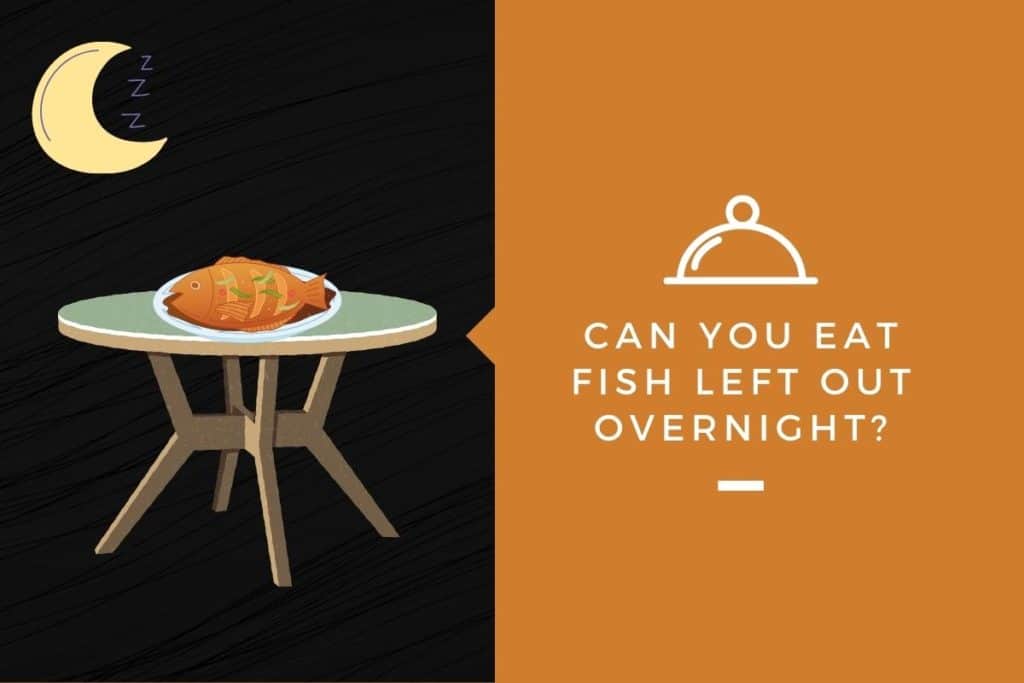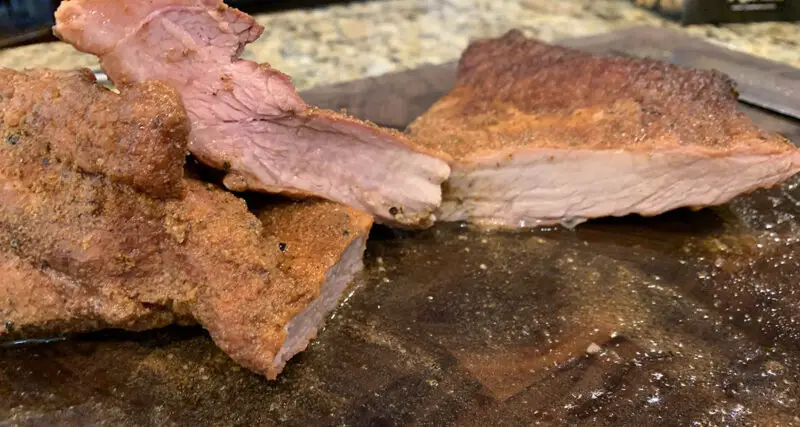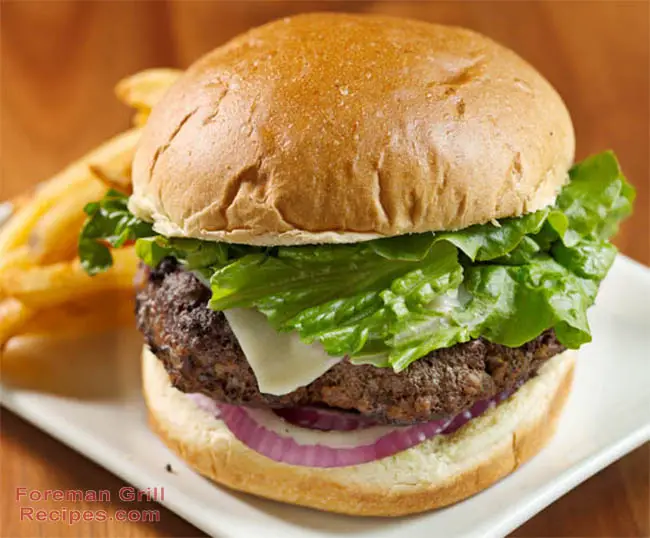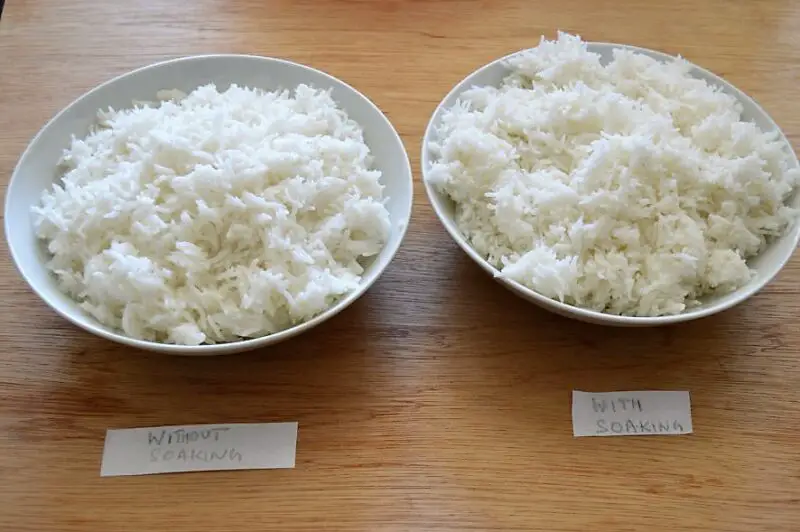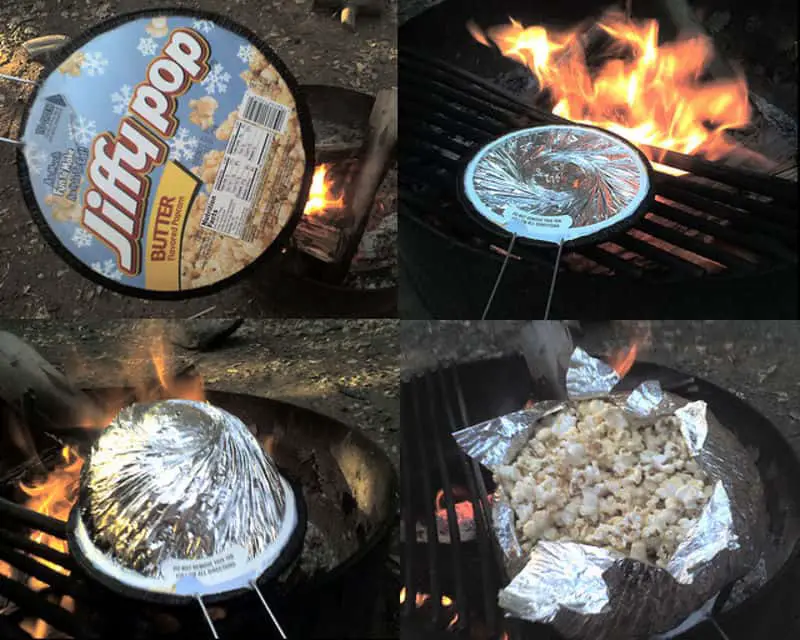Can You Eat Fried Fish That Has Been Left Out Overnight: A Comprehensive Guide
Food that has been left out at room temperature for hours or even overnight is a common dilemma faced by many. This is especially true for those who have cooked too much food or have leftovers from their meals. While some may be hesitant to throw the food away, concerns about its safety and potential risks from consuming it may arise.
In this article, we will answer the question, “Can you eat fried fish that has been left out overnight?” and provide a comprehensive guide on the topic.
What Happens to Food Left Out Overnight?
Food left out in the open for an extended period can become a breeding ground for bacteria. When food is stored at room temperature, bacteria starts to grow rapidly at temperatures between 40°F (4°C) and 140°F (60°C), known as the “temperature danger zone.
When food items are left at room temperature, they can come into contact with different types of microbes- bacteria, molds, and viruses- that can cause food poisoning when ingested. Additionally, some foods are more prone to spoilage than others due to their high moisture content or low acidity levels.
The Common Microbes Found in Spoiled Food
- Bacteria: One of the most common types of microbes found in spoiled food is bacteria. Bacteria multiplies rapidly once they find themselves in an environment rich in nutrients such as protein and sugar. Some of the common bacteria found in spoiled food include Salmonella, Listeria, and E.coli which are notorious for causing foodborne illnesses.
- Molds: Molds thrive well in warm and moist environments making leftover bread or pastries great breeding grounds. While most types of molds are not harmful, ingesting toxic molds like black mold can cause severe allergic reactions in some people.
- Viruses: Unlike bacteria and molds that grow in food, viruses tend to spread through infected handlers when there’s poor hygiene and sanitation. This is especially true for ready-to-eat foods because they typically have high moisture content, which creates an ideal environment for viruses to spread rapidly. Some common foodborne viruses include Norovirus and Hepatitis A Virus.
The Temperature Danger Zone
The temperature danger zone is between 40°F (4°C) and 140°F (60°C), where bacteria multiply most rapidly. The risk of food poisoning increases significantly after food stays within the danger zone for two hours or more. At this temperature range, bacteria rapidly grows on the surface and inside the food, producing toxins that can affect our health. This is why hot food needs to be kept hot, while cold food should be served cold.
The Risks of Consuming Food Left Out Overnight
Consuming food that has been left out overnight poses several health risks due to bacterial growth on the exposed surface of the food.
Foodborne Illnesses Caused by Spoiled Food
Spoiled food can lead to numerous cases of foodborne illnesses, including:
- Salmonella: Often associated with undercooked poultry or raw eggs.
- Listeria: Found in uncooked meats, dairy products and vegetables.
- E. coli: Found in undercooked ground beef or fresh produce like spinach or lettuce.
- Campylobacter: A bacteria that can be found in raw or undercooked poultry.
- Botulism: A toxic foodborne illness caused by consuming foods that contain the neurotoxin produced by Clostridium botulinum. Symptoms can include muscle weakness, blurred vision, and difficulty breathing.
Overview of Symptoms and Consequences of Foodborne Illnesses
Symptoms of food poisoning can manifest from a few hours to several days after infection. Common symptoms include:
- Nausea and vomiting
- Diarrhea or bloody stools
- Fever or chills
- Stomach cramps or abdominal pain
- Dehydration
- Headache and fatigue
In some cases, eating spoiled food could lead to severe consequences such as hospitalization or death. Infants, pregnant women, elderly adults, and individuals with weakened immune systems are more susceptible to foodborne illnesses.
Comparison between Different Types of Food and Their Risk Factors
Some types of foods are more prone to spoilage than others due to their acidity levels or high moisture content. For instance:
- Fruit: Fruit’s high sugar content makes it an ideal breeding ground for bacteria.
- Dairy Products: Fresh milk, cream-based sauces, and cheese are prone to bacterial growth especially when left out at room temperature.
- Poultry and Meat: Uncooked meat carry harmful bacteria like Salmonella and cause food poisoning when consumed without proper cooking.
- Fish: Raw fish can harbor a variety of bacteria and parasites, making it susceptible to spoilage when left out overnight or at room temperature.
Is It Safe to Eat Fried Fish That Has Been Left Out Overnight?
The quality and safety of fried fish left out overnight depend on several factors, such as the type of fish used and the storage conditions. Generally, fried fish will not last as long as fresh or raw fish due to the cooking process.
Factors that Determine the Safety of Consuming Fried Fish Left Out Overnight
Type and Quality of the Fish Used: The quality of the fish used is the most critical factor influencing whether fried fish is safe to consume if left out at room temperature overnight. Fresh fish stored at the right temperature will last longer than others with low-quality storage or freezing methods. Additionally, some types of fish, like oily fish, which have a higher fat content can go rancid quickly when left out for too long.
The “Nose Flavor” Test: To determine if fried fish that has been left out overnight is safe for consumption despite its prolonged exposure to air, use your sense of smell. If it smells sour or off, then avoid eating it altogether.
How to Store and Reheat Fried Fish Properly
There are ways to properly store and reheat your leftover fried fish without compromising its flavor and safety.
Best Practices for Storing Leftover Fried Fish
- Cool It Down Quickly: After cooking your fried fish within two hours at most put it in a shallow container and put it in your refrigerator if you plan to eat it later. This minimizes bacterial growth.
- Avoid Stack Pile: Do not pile the fried fish on top of one another when storing them to prevent their crispy coating from becoming soggy.
- Use Air-tight Packaging: Store the fried fish in an air-tight container or wrap them tightly using a plastic wrap. Doing so will help minimize exposure to air, which can cause cross-contamination.
- Store for No Longer than Two Days: Store fried fish leftovers in the fridge at a temperature of 40°F (4°C) or below and consume within two days.
Tips for Reheating Fried Fish Without Compromising Its Quality and Flavor
- Avoid direct heat: Don’t reheat your fried fish directly on the stovetop, as this can result in overcooking or burning.
- Oven Preheat: Preheat your oven to 350°F (177°C) and warm up the leftover fried fish inside it for 10-15 minutes, depending on its quantity.
- Serve with Moisture Retention Items: If you’re reheating the fish using a microwave oven, place a wet paper towel on it before microwaving to preserve moisture as it heats up.
- Re-fry: Another option is to give leftover fried fish a second fry briefly. The refry will help rescue any lost crispiness from freezing but do not keep refrying multiple times as each time makes the breading less crispy than the previous one.
Temperature Guidelines for Reheating Fried Fish
The internal temperature of reheated leftover fried fish should be 165°F (74°C), as stated by the USDA’s Food Safety and Inspection Service. Use a meat thermometer to check the temperature of the fish to ensure it’s safe for consumption.
The Shelf Life of Fried Fish: What You Need to Know
The shelf-life of fried fish can vary based on different factors, such as the type of fish used, cooking oil used, or storage conditions. However, there are some general guidelines to keep in mind:
Factors that Affect the Shelf Life of Fried Fish
- Freshness: Freshness is the most critical factor determining how long you can store fried fish. If you buy stale or already-old seafood, expect that it won’t last too long from its purchase date.
- Type of Fish: As previously mentioned, some types of fish have higher fat content that can cause them to spoil quickly.
- Cooking Oil Used: Cooking oil used in preparing the fried fish can also impact its shelf life. Rancid oil causes a foul taste in the dish and reduces its lifespan.
How Long Can You Store Fried Fish in the Fridge or Freezer?
- In Refrigerator: You can store leftover fried fish in a refrigerator for up to three days. Try consuming it within this time limit for optimal quality.
- In Freezer: Flash-freeze your fried fish leftovers by placing them onto a baking sheet and freezing them individually before storing them in an airtight container or freezer bag and labeling with their date if you plan to consume them later, and they will last up to 2 months from freeze date.
Tips for Identifying Spoiled Fried Fish
- Foul Smell: If you notice a sour, rancid or foul odor when you open your leftover fried fish, discard it. It’s not safe to consume and can cause health problems.
- Mold Growth: Moldy or fuzzy growth on the surface of your leftover fried fish is an indication that it may be unsafe to eat.
- Off Texture or Taste: If the crust feels soggy when reheated or the taste is foul, there could be bacterial growth on the surface, and it’s best to discard it altogether.
Alternative Uses for Fried Fish Leftovers
If you find yourself with leftover fried fish, instead of discarding them, try repurposing them! Here are some excellent recipes that you can try:
- Crispy Fried Fish Sandwich: Layer your leftover crispy fish fillet between a soft bun and garnish with lettuce, pickles, cheese and homemade tartar sauce for a delicious sandwich.
- Fried Fish Salad: Top your favorite greens with bite-size crispy fried fish chunks for another easy meal option.
- Fried Fish Tacos: Make tacos by stuffing your leftover fried fish into tortillas along with some dressing and chopped veggies.
Frequently Asked Questions (FAQs)
How Can I Tell if My Fried Fish has Gone Bad?
If your fried fish smells sour or off even after reheating it or upon opening the container after storing in the fridge overnight, consider throwing out as it is no longer safe to eat. If there is any visible mold growth or discoloration, that is another indication of spoilage.
How Long Can I Keep My Fried Fish in the Refrigerator?
You can keep your leftover fried fish in the refrigerator for up to three days as long as you have stored it correctly, sealed it well, and kept it at a temperature of 40°F (4°C) or below. Consume within three days to maintain optimal quality.
Can I Freeze Leftover Fried Fish?
Yes, you can freeze leftover fried fish in an airtight container for up to two months. Be sure to label and date so that you can determine when they need to be consumed.
Conclusion
If you’ve been wondering whether fried fish that has been left out overnight is still safe for consumption, this comprehensive guide should have answered all your questions. Bacteria grow rampant when food is left out in the open air for extended periods at temperatures ranging within the danger zone of 40°F (4°C) and 140°F (60°C). Food poisoning from consuming spoiled food can lead to severe consequences such as hospitalization, dehydration or even death in rare cases.
The quality and safety of fried fish that was left out overnight depend on several factors such as the type of fish used, proper storage procedures followed, and reheating methods applied. When storing and reheating leftovers properly, fried fish can make another tasty meal or snack.
As you continue to enjoy your favorite seafood dishes, always be sure to manage your time appropriately so that food can be stored in the refrigerator or freezer promptly. Also, practice good hygiene habits like washing your hands while handling food preparation. Stay healthy by checking each dish before consuming anything that’s compromised or potentially unsafe.
References
- “Safe Minimum Cooking Temperatures.” USDA’s Food Safety and Inspection Service, https://www.fsis.usda.gov/food-safety/safe-food-handling-and-preparation/food-safety-basics/safe-temperature-cook. Accessed 1 May. 2021.
- “Food Poisoning.” Mayo Clinic, Mayo Foundation for Medical Education and Research, 3 Apr. 2019, https://www.mayoclinic.org/diseases-conditions/food-poisoning/symptoms-causes/syc-20356230. Accessed 1 May. 2021.
- “Temperature Danger Zone.” SFGATE, https://homeguides.sfgate.com/temperature-danger-zone-85379.html. Accessed 1 May. 2021.
Can I still eat fried fish that has been left out overnight?
Yes, it is not advisable to eat fried fish that has been left out overnight. When food is left at room temperature for more than two hours, it becomes a breeding ground for bacteria that cause foodborne illnesses. Eating spoiled fish can cause food poisoning symptoms such as nausea, vomiting, diarrhea, and stomach cramps.
How long can fried fish be left out before it becomes unsafe to eat?
Food safety guidelines recommend that cooked food should not sit at room temperature for longer than two hours. If the temperature in the environment is above 90°F, the window is reduced to one hour. So if your fried fish has been left out for more than two hours (or one hour above 90°F), do not eat it as it may be contaminated with harmful bacteria.
Can reheating the fried fish make it safe to eat?
Reheating leftovers may kill some of the bacteria, but it does not guarantee that the food will be 100% safe to eat. Some types of bacteria produce toxins that cannot be destroyed by heat. Plus, reheating can also dry out fried fish, making it less palatable.
What is the best way to store leftover fried fish?
The best way to store leftover fried fish is by putting them in an airtight container or wrapping them with aluminum foil and keeping them in the fridge as soon as possible after cooking. Cooked fish can last up to three days in the refrigerator before losing flavor and texture quality. For longer storage, consider freezing your leftovers, but keep in mind that frozen meals may take some time to thaw before reheating.
